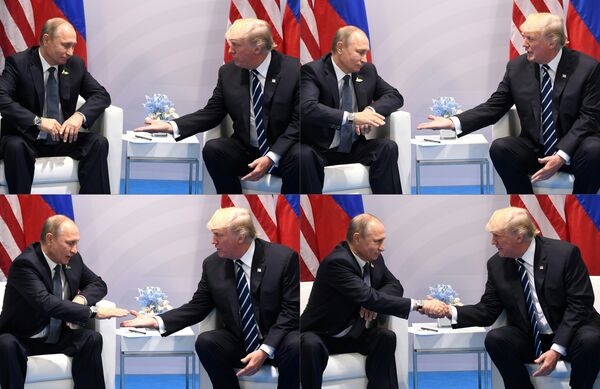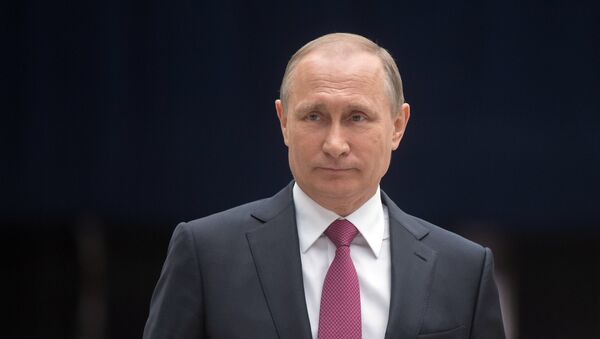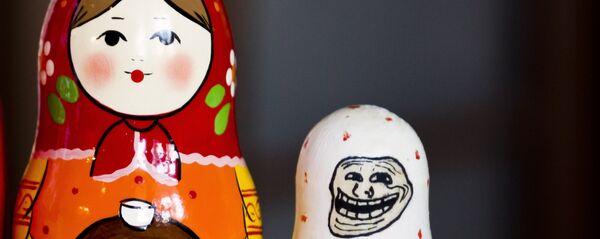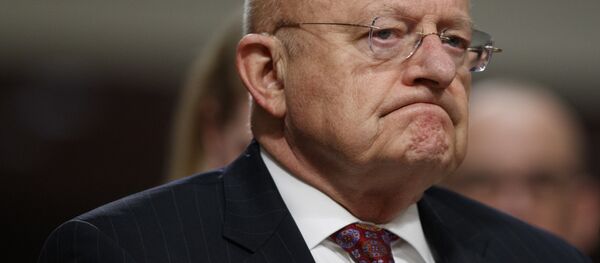The new Time magazine cover, featuring a pixelated image of the Russian president's head composed of a mass of grey figures, is accompanied by a cover story titled 'The Secret Plan to Stop Putin's Election Plot'. The story is yet another elaborate, long-winded anti-puff piece about the Kremlin's alleged tampering in the 2016 US presidential elections, 'the enemy within' (Donald Trump, naturally) and Obama-era intelligence officials efforts to stop Vladimir Putin's dastardly scheme.

Commenting on the zeitgeist behind the image and the story, journalist and RIA Novosti contributor Igor Pshenichnikov quipped that of naturally, there was "no point hoping that the Russian president would be praised" in the Time piece. The story is part of the same narrative that's been spun and overanalyzed to no end since the 2016 election took place.
"The American man in the street has no doubt in his mind: the Russians 'hacked' into the US presidential elections, and brought Donald Trump to power. And President Putin is behind it all." "But how can it be otherwise," Pshenichnikov asked, if the website of the New York Times, America's traditional newspaper of record, features an entire subsection in its U.S. section called 'Russian Hacking and Influence in the US Election'?
"Among the main materials of this section is a chart called 'Following the Links From Russian Hackers to the US Election.' One doesn't need to read further – even the blind can see that the Russians have hacked the whole of America," Pshenichnikov noted.

"But if one reads closer, the explanations in this chart consist exclusively of phrases in the style of 'maybe' and 'it seems to me' – phrases like 'American intelligence officials have said they believed,' 'hacking group possibly linked to the [FSB], the main successor to the KGB,' 'investigators believe that the GRU, or a hacking group known as Fancy Bear,' 'intelligence officials assess with high confidence', etc."
"Not a single piece of evidence," Pshenichnikov wrote. "In the First Moscow Medical Institute there once was a professor who told students during the exam: 'Don't guess. Know.', and put a failing grade in students' grade book" if they didn't know the answer. "But in America, it seems, there is no one who could objectively evaluate everything and, on occasion, give a failing grade. In the minds of the overwhelming majority of Americans, a hallucinogenic child from the media is mixed with local reality, which in itself is often surreal."
The banner headlines alone say everything that needs to be said: 'The Russia investigation: Everything you need to know and 'Who's who in Trump-Russia saga'.
"It's clear of course that the main character in this 'investigation' and this 'saga' is Vladimir Putin. The first banner has been blasting the eyes of CNN site's visitors since June 7, the second since May 28. This is already part of 'objective' reality," Pshenichnikov added.
"All of us, of course, would be interested to learn when this will all end," the journalist noted. "But here's the thing: the global liberal establishment which finances and oversees the leading American and Western European media has used these media to give rise to a kind of 'collective intelligence' of a collective West. A distinctive feature of this collective intelligence is that it is tied to liberal catechism."
"With regard to Russia, the dial is configured to only one setting: Russia is evil (because it does not fit into the liberal system of values); liberal values themselves are good. And even if the curators of the Western media wanted to broadcast on a different wave, they would not be able to – the wave's not right. Turning the dial is useless – it's been broken off and lost."
"And apparently, it will continue along the same lines, until it devours itself, all the while convinced that it is consuming us," the journalist concluded.





